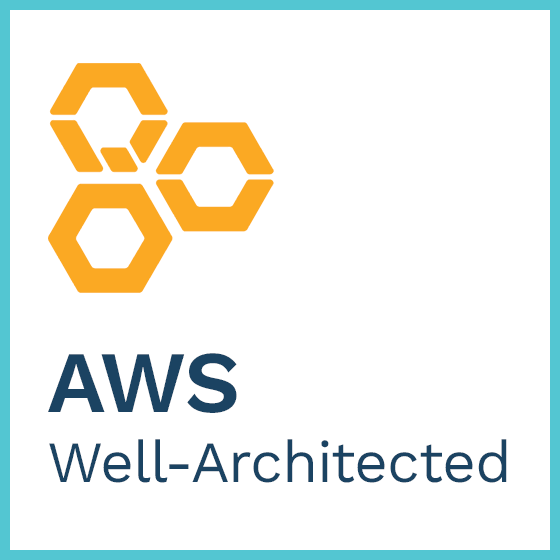Enable ideas, challenge the present, never stop learning and always be nice.
What we do Who we are #TheTIQQEcode References Work at TIQQE Blog Contact. Privacy policy

The 5 pillars of the AWS Well Architected Framework
Creating a software system is a lot like constructing a building. If the foundation is not solid, structural problems can undermine the integrity and function of the building.
When architecting technology solutions on Amazon Web Services (AWS), if you neglect the five pillars of operational excellence, security, reliability, performance efficiency, and cost optimization, it can become challenging to build a system that delivers on your expectations and requirements. Incorporating these pillars into your architecture helps produce stable and efficient systems. This allows you to focus on the other aspects of design, such as functional requirements.
The AWS Well Architected Framework helps cloud architects build the most secure, high-performing, resilient, and efficient infrastructure possible for their applications. This framework provides a consistent approach to evaluate architectures, and provides guidance to implement designs that scale with your application needs over time.
1. Operational Excellence
The operational excellence pillar includes the ability to run and monitor systems to deliver business value and to continually improve supporting processes and procedures.
There are six design principles for operational excellence in the cloud:
Operations teams need to understand their business and customer needs so they can support business outcomes. Ops creates and uses procedures to respond to operational events, and validates their effectiveness to support business needs. Ops also collects metrics that are used to measure the achievement of desired business outcomes.
Everything continues to change—your business context, business priorities, customer needs, etc. It’s important to design operations to support evolution over time in response to change and to incorporate lessons learned through their performance.
2. Security
The security pillar includes the ability to protect information, systems, and assets while delivering business value through risk assessments and mitigation strategies.
There are six design principles for security in the cloud:
Before you architect any system, you need to put in place practices that influence security. You will want to control who can do what. In addition, you want to be able to identify security incidents, protect your systems and services, and maintain the confidentiality and integrity of data through data protection.
You should have a well-defined and practiced process for responding to security incidents. These tools and techniques are important because they support objectives such as preventing financial loss or complying with regulatory obligations. The AWS Shared Responsibility Model enables organizations to achieve security and compliance goals. Because AWS physically secures the infrastructure that supports our cloud services, you can focus on using services to accomplish your goals.
3. Reliability
The reliability pillar includes the ability of a system to recover from infrastructure or service disruptions, dynamically acquire computing resources to meet demand, and mitigate disruptions such as misconfigurations or transient network issues.
There are five design principles for reliability in the cloud:
To achieve reliability, a system must have a well-planned foundation and monitoring in place, with mechanisms for handling changes in demand or requirements. The system should be designed to detect failure and automatically heal itself.
Before architecting any system, foundational requirements that influence reliability should be in place. For example, you must have sufficient network bandwidth to your data center. These requirements are sometimes neglected (because they are beyond a single project’s scope). This neglect can have a significant impact on the ability to deliver a reliable system. In an on-premises environment, these requirements can cause long lead times due to dependencies and therefore must be incorporated during initial planning.
4. Performance efficiency
The performance efficiency pillar includes the ability to use computing resources efficiently to meet system requirements and to maintain that efficiency as demand changes and technologies evolve.
There are five design principles for performance efficiency in the cloud:
Take a data-driven approach to selecting a high-performance architecture. Gather data on all aspects of the architecture, from the high-level design to the selection and configuration of resource types.
By reviewing your choices on a cyclical basis, you will ensure you are taking advantage of the continually evolving AWS cloud. Monitoring will ensure you are aware of any deviance from expected performance and can take action on it.
Finally, your architecture can make tradeoffs to improve performance, such as using compression or caching, or relaxing consistency requirements.
The optimal solution for a particular system will vary based on the kind of workload you have, often with multiple approaches combined. Well-architected systems use multiple solutions and enable different features to improve performance.
5. Cost optimization
The cost optimization pillar includes the ability to avoid or eliminate unneeded cost or suboptimal resources.
There are five design principles for cost optimization in the cloud:
As with the other pillars, there are tradeoffs to consider. For example, do you want to optimize for speed to market or for cost? In some cases, it’s best to optimize for speed—going to market quickly, shipping new features, or simply meeting a deadline—rather than investing in upfront cost optimization.
Design decisions are sometimes guided by haste as opposed to empirical data, as the temptation always exists to overcompensate “just in case” rather than spend time benchmarking for the most cost-optimal deployment. This often leads to drastically over-provisioned and under-optimized deployments.
Using the appropriate instances and resources for your system is key to cost savings. For example, a reporting process might take five hours to run on a smaller server but one hour to run on a larger server that is twice as expensive. Both servers give you the same outcome, but the smaller one will incur more cost over time. A well-architected system will use the most cost-effective resources, which can have a significant and positive economic impact.

Enable ideas, challenge the present, never stop learning and always be nice.
What we do Who we are #TheTIQQEcode References Work at TIQQE Blog Contact. Privacy policy
© 2025 TIQQE.
